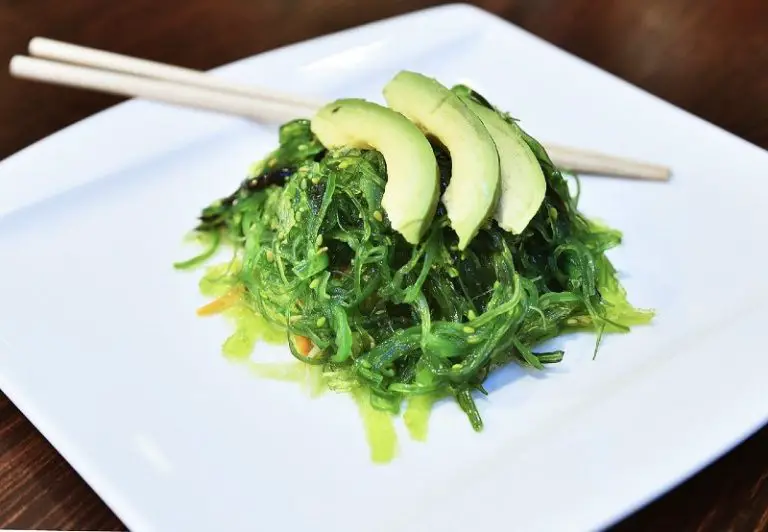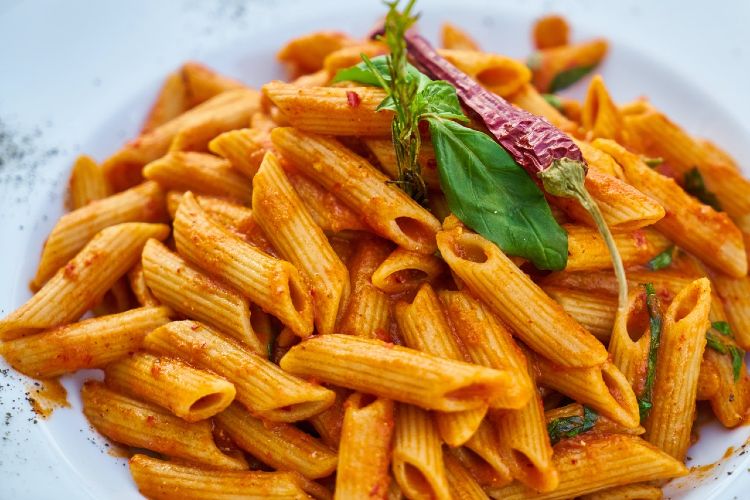What Do Plums Taste Like?
Quick Answer
The taste of a plum varies by variety but is generally sweet and tart with juicy, succulent flesh. The skin can add a tangy contrast, and the overall flavor can range from simple sweetness to complex, wine-like notes. Ripeness also plays a significant role, with the fruit becoming sweeter and softer as it matures.
What is Plum?
A plum is a stone fruit that belongs to the genus Prunus, which also includes cherries, apricots, and almonds. It has a central pit, surrounded by juicy flesh and typically covered with a smooth or sometimes waxy skin. Plums come in various colors, including red, purple, yellow, and green, and they are enjoyed fresh, dried (as prunes), or used in various culinary applications like jams, jellies, and sauces.
What Does A Plum Taste Like?
Sweet, Tart, Juicy
At its core, the taste of a plum is a delightful balance between sweet and tart. The flesh of the plum is typically juicy and succulent, offering a refreshing burst of flavor as you bite into it. These characteristics make the plum a satisfying fruit to consume, providing both hydration and a complex taste that dances between sweet and sour notes.
Role of Skin in Adding a Tangy Flavor
One of the unique aspects of a plum’s taste profile is the skin. Unlike the flesh, which leans toward sweetness, the skin of a plum can be tangy or even slightly bitter.
This adds an additional layer of complexity to the fruit, as the skin’s tartness can complement or contrast the sweet flesh in a pleasing way.
Some people prefer to peel the skin off to enjoy the unadulterated sweetness of the flesh, but many find that the skin adds an important dimension to the overall flavor experience.
Comparison to Other Fruits Like Peaches and Cherries
If you’re familiar with other stone fruits like peaches and cherries, you might find some similarities in the taste of a plum.
Like a peach, a plum has a juicy, sweet flesh, but it usually lacks the floral notes that are characteristic of peaches.
Plums are also less fibrous than peaches, leading to a smoother eating experience.
When it comes to cherries, plums offer a similar balance of sweet and tart but are generally less intense in flavor and larger in size.
The plum’s taste could be described as more subdued and complex, offering a less overt sweetness than a cherry but a broader range of flavors.
Changes in Taste as The Plum Ripens
The taste of a plum can vary significantly depending on its level of ripeness. When a plum is not fully ripe, it often has a tart, almost astringent flavor that can be less appealing to those who prefer a sweeter fruit.
As the plum ripens, its sugars develop, making the flesh sweeter, juicier, and more flavorful.
The tartness doesn’t completely disappear but mellows into a pleasant tanginess that complements the sweetness, creating a more balanced and enjoyable flavor profile.
What is The Texture Of Plum Like?
The texture of a plum varies depending on its ripeness and variety, but generally, it has a juicy, succulent flesh that is tender and gives easily when bitten into.
The skin is usually smooth and can range from thin to moderately thick, providing a slight resistance before yielding to the soft flesh inside. Some people describe the texture as similar to that of a nectarine or peach, although usually less fibrous.
Overall, the texture is a key component of what makes plums enjoyable to eat, offering a satisfying contrast between the slightly resistant skin and the juicy interior.
FAQs
Do Plums Taste Good?
The flavor of plums is generally well-regarded, offering a balance of sweetness and tartness that appeals to a wide range of palates.
The juiciness of the flesh adds to the overall eating experience, making plums a popular choice for both fresh consumption and culinary uses. So yes, most people find that plums do taste good!
What Does Plum Smell Like?
The aroma of a ripe plum can be described as fruity, sweet, and slightly floral. The smell often indicates the fruit’s readiness to be eaten, and it can intensify as the plum continues to ripen. A good, ripe plum should have a noticeable but not overpowering fragrance.
Is The Plum Skin Edible?
Yes, the skin of a plum is edible and is actually a part of the fruit that contributes to its overall flavor profile.
The skin can add a slightly tangy or tart element to the plum’s taste, complementing the sweeter flesh. Some people prefer to remove the skin for certain recipes, but generally, it is edible and nutritious.
Is The Plum Seed Edible?
No, the plum seed or pit is not edible and should be discarded. The pit contains compounds that can be harmful if consumed in large quantities, so it’s best to remove it before eating the flesh or using the plum in recipes.
What Tastes Best With Plums?
Plums pair well with a variety of foods. They go excellently with creamy cheeses like Brie or Camembert, spices like cinnamon and star anise, and meats like duck or pork.
In terms of beverages, light wines like Pinot Noir or Riesling can complement their flavors well. Fresh herbs like mint and basil can also add a delightful twist.
What is The Difference Between Plum And Sugar Plum?
While the term “sugar plum” may conjure images of sweet, juicy plums, it actually refers to a type of candy that’s often associated with Christmas.
Traditional sugar plums are made from a mixture of dried fruits and spices, shaped into small rounds, and coated in sugar. They don’t necessarily contain any plum fruit.
What Does Plum Crumble Taste Like?
Plum crumble combines the sweet-tart flavor of plums with the buttery, crunchy texture of a crumble topping.
The cooked plums become soft and release their juices, which mix with sugar and spices to create a rich, flavorful filling.
The topping often includes elements like oats, flour, sugar, and butter, creating a crispy contrast to the tender fruit beneath.
What Does Plum Jam Taste Like?
Plum jam has a concentrated, sweet, and tart flavor, often with notes of spice like cinnamon or cloves. The cooking process deepens the plum’s natural flavors, resulting in a preserve that captures the essence of the fruit but with intensified sweetness and tartness.
It’s a popular choice for spreading on toast or adding to desserts, and it offers a versatile way to enjoy the taste of plums year-round.
Are Green Plums Edible?
Yes, green plums are edible and can be quite sweet when fully ripe, despite their color that may suggest tartness.
Do All Plum Varieties Taste The Same?
No, different plum varieties have different flavors, textures, and sweetness levels. European plums, for example, are usually sweeter and less juicy compared to Japanese plums, which are often tart and very juicy.
Why Does My Plum Taste Bitter?
A bitter taste in plums can be caused by various factors including under-ripeness or certain disease conditions affecting the fruit.
How Can I Tell If A Plum Will Be Sweet Or Tart?
The color and smell of the fruit can be good indicators. Darker, fully ripened plums are generally sweeter, while lighter or greenish plums may be tart. A sweet aroma also usually signals a sweeter plum.
Can You Enhance The Taste Of A Plum?
Yes, you can enhance the flavor by allowing it to ripen at room temperature. You can also sprinkle a little salt or sugar to balance its natural flavor.
What Happens To The Taste Of Plums When They’re Cooked?
Cooking plums can enhance their sweetness and make their flavor more robust. Cooking can also help reduce tartness.
Do Plums Lose Their Flavor When Frozen?
Freezing plums may cause them to lose some of their texture, but the flavor usually remains intact. It’s a good idea to use frozen plums in recipes where the texture change won’t be noticeable, like smoothies or sauces.
Can I Use Plums In Savory Dishes?
Absolutely! Plums can be used in a variety of savory dishes, like salads, sauces, or as a compote to accompany meats. Their sweet-tart flavor can complement many types of cuisine.



